What is a Grow Tent?
Sometimes referred to as a “Grow Room” a grow tent is basically a convenient, portable enclosed frame that allows you to grow a variety of plants indoors. The frame is easily assembled from light, strong metal poles that slot together and are covered with a thick canvas outer layer. This sturdy durable material which is often made out of nylon, polyester or Mylar is bonded to a reflective inner lining which covers the inside of the tent. The inner lining normally comes in either a reflective silver or white.
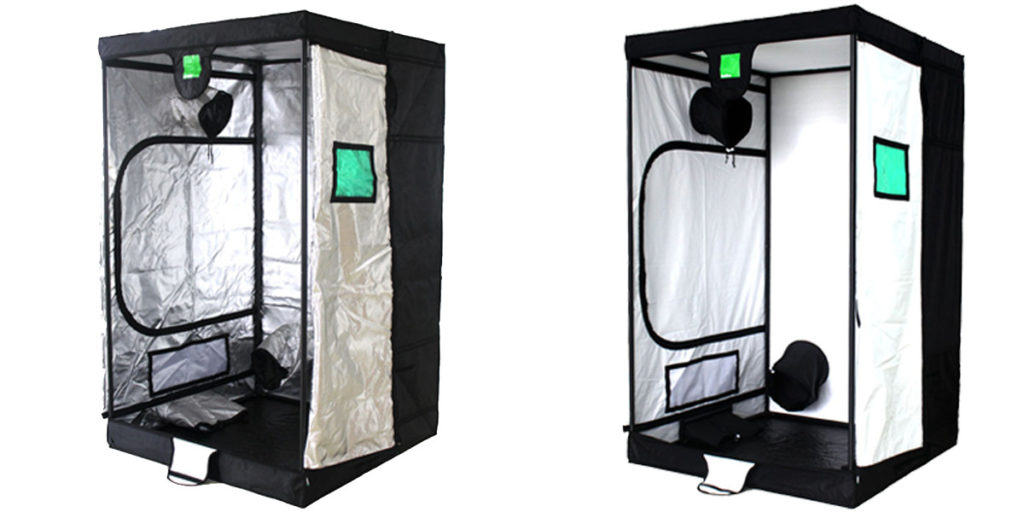
Available in a wide range of sizes to suit all space constraints, plants and personal tastes, Grow tents are designed to capture and keep in heat, light and humidity at a tailored level, allowing you to manipulate and control a plants environment, encouraging it to produce the specific results that you require. This could be growing plants quicker, taller, or for bigger fruits. What you are doing is creating and maintaining an artificial mini-climate that you have complete control over, something that a normal outside environment does not naturally allow.
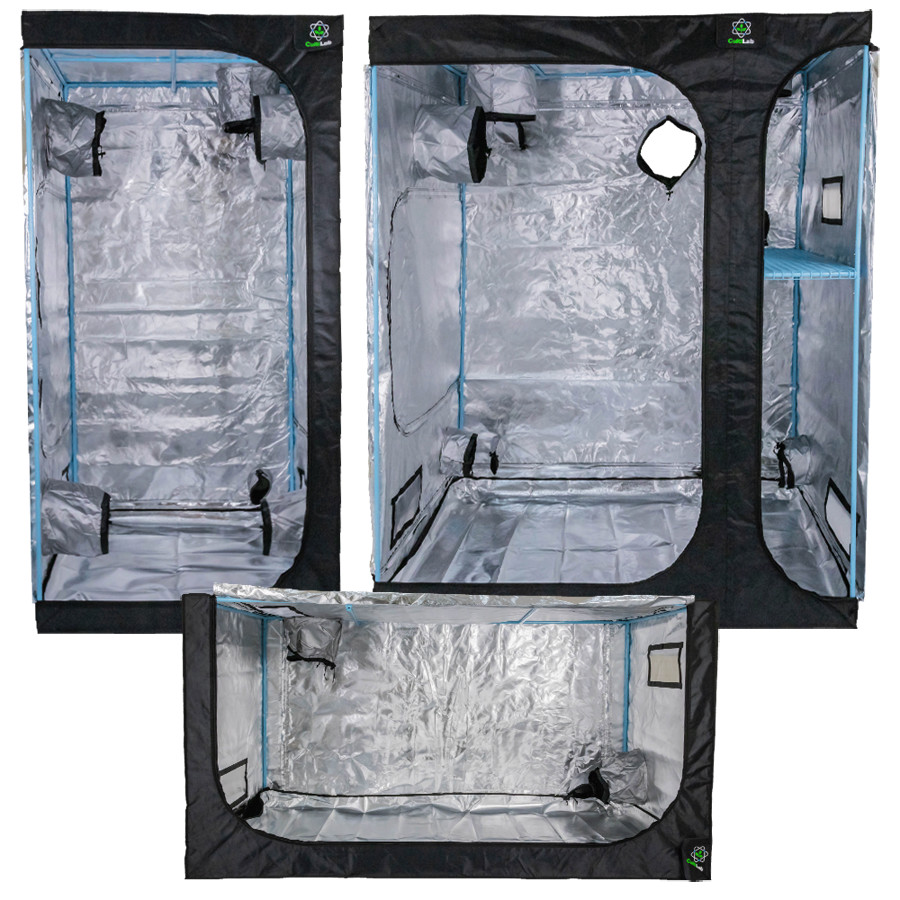
Grow tents are great as they allow you to grow varieties of plants that would otherwise may require natural climate conditions vastly different to those in your geographical location. They are also ideal for accommodating the needs of plants that require specific light or temperature conditions at different stages of the growth cycle (Vegetation, Flowering etc.) Grow tents can be fine tuned easily so that your desired levels of environment can be maintained for as long as needed.
So how does the Grow tent work? Why do we use them?
Grow Tents sustain the perfect mini environment for your plants, through the control of Light, Temperature and Humidity. Let’s look at why these elements are important to your plants development and how a grow tent can help optimize them.
How does a Grow tent help to optimize Light conditions?
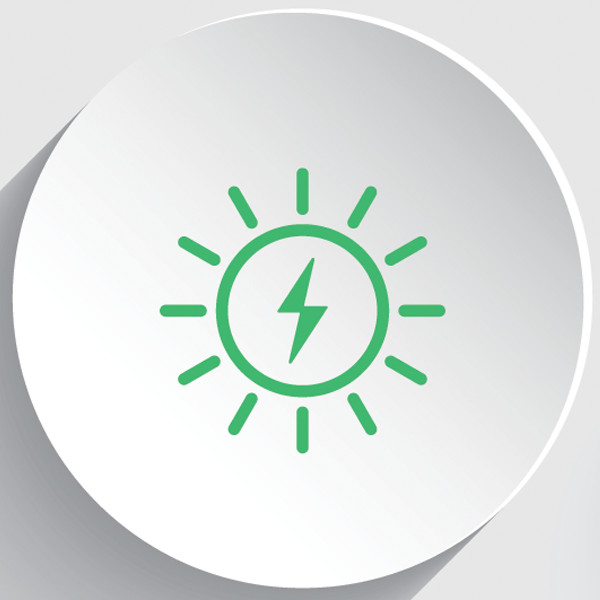
All plants need light to perform photosynthesis allowing them to grow and develop. In a grow tent environment, this light is provided by powerful grow lamps that simulate natural sunlight. This light proof, sealed environment allows no to minimal light to escape.
The silver or white reflective lining in the tent works to reflect any light in the tent back on to the plant, maximising the exposure and reducing photon losses. It also helps to get light to the lower areas of the plant which in a natural environment may be in the shade or hidden from the sunlight. This sealed lightproof environment works both ways, it does not let light out and likewise it lets none in, meaning that your plants are only exposed to the light when you want them to be
When you are replicating the natural 24hr light cycle that a plant would be exposed to the period of darkness (night) is as important to get right as the period of light (day) Grow tents are extremely effective in delivering these conditions without any damageable risk of light leakage. Most modern grow light systems can be dimmed down and brightened meaning that you are totally in control of all light conditions within those 4 walls at all times.
How does a Grow tent help to optimize Temperature conditions?
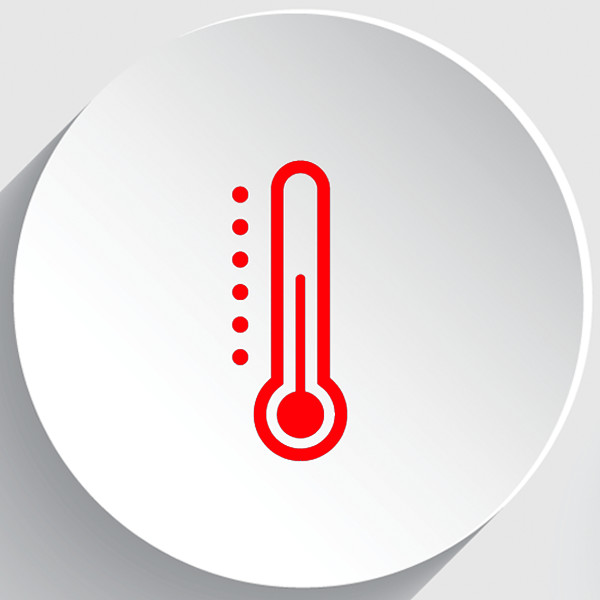
Like light, temperature is vital to maintain correctly if you want great results from your plants. The semi closed environment of a Grow tent is ideal to do just this, offering insulation, which along with the reflective lining helps to retain the heat produced by the grow lamps. You can control the temperature completely within the tent, altering it to your plants optimum needs throughout its lifecycle.
As well as adjusting the brightness and height of your lights, the use of a ventilation system will also help control temperature and increase air circulation. Although tents are sealed “self sustaining” mini-climates they do feature some port-holes and vents which can be opened and re-sealed to allow for the ventilation equipment to be fitted and do its job. Tents provide a safe stable environment for your plants to grow in, regardless of the conditions outside of it.
How does a Grow tent help to optimize Humidity?

The temperature level and the ratio of light in your grow tent, together, will dictate the levels of humidity present. Humidity levels are just as important to maintain correctly if you want to positively influence your plant’s transpiration rate. Transpiration being the evaporation of water from the plant leaves into the atmosphere, which cools the plant, moves minerals and sugars throughout the plant to where needed and also maintains turgor pressure in the non-woody parts of the plant, preventing wilting. If humidity is too high it will encourage mold and rot which will spread and destroy your crop.
A grow tent offers you the perfect isolated self-sustained climate in which to control your humidity. By correctly maintaining light and temperature and monitoring it by using a hygrometer and thermometer, it naturally follows that your humidity will be spot on to! In a semi sealed environment nothing is left to chance or is at the mercy of changeable weather conditions, meaning your humidity will stay stable and will not be exposed to any outside threats. The very fact that can control what comes in or out of your Grow tent is a further advantage in that it will reduce the chance of any insect pests from infesting your plants, along with reducing the risk of any mold spores or plant disease from outside sources invading your crop and destroying it.
Sounds great so far but it cant be that easy! What else do I need when I buy a Grow tent?
Now you know why you need a tent you may be wondering how you set it up and what other equipment you need to get started. At first glance setting up your first Grow tent can be quite daunting, trying to figure out what configuration you need for the space you have, what size fan you need, how many lights etc. Not to worry however as there are some amazing options on sale that make setting things up foolproof and contain everything that is required to produce amazing results.
“Cultilab complete Grow tent kits” are great as they are like a ‘hydroponic starter kit”. They are made up of a custom built package of equipment providing you with tried and tested brands that are all compatible with the specific size of tent that you buy so you can rest assured that you have the correct spread of light, the most efficient ventilation system, a sufficient ballast and all the accessories that you will need to get going ASAP. They are great value for money also, with the price of buying the same components separately being considerably more than the price of buying as a package. View the full range of complete kits here.
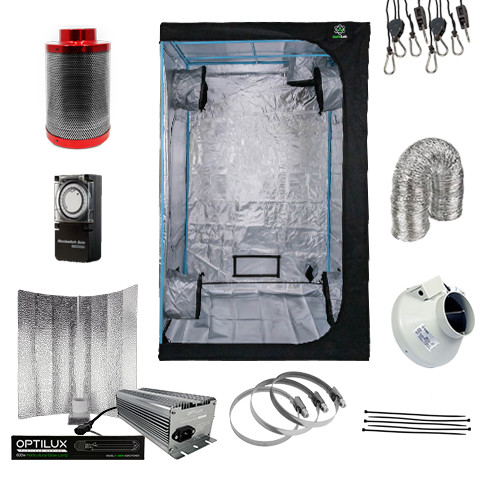
Complete kits come in all shapes and sizes. The most commonly bought sizes in which you can complete a full grow cycle are 1.2mx1.2m and 2.4mx1.2m but the sizes do go all the way up to a massive 2.4m2. There are even kits available just for the propagation stage of the plants life, allowing you to get to grips with a pro set up straight away and give your plants the best start possible. Cultilab kits suit all budgets and can even give you a choice of whether you want to use HPS lights or LED’s, Magnetic or digital ballasts, so it is worth doing some research beforehand into the pros and cons and deciding what is going to work best for you.
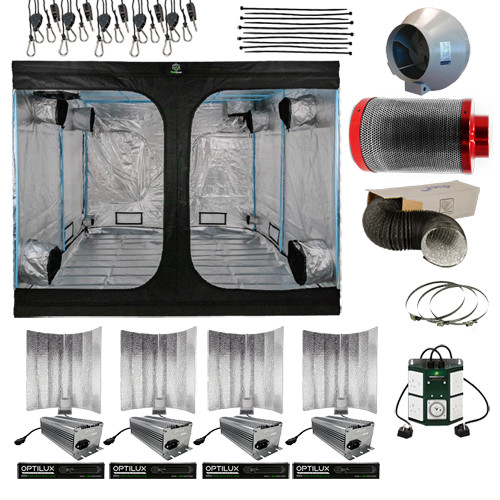
Other factors to consider when buying a tent kit?
When it is this easy your main consideration should be figuring out how much space you have available and buying a kit to fit! There are other factors to consider however so lets have a look at what they are.
Plant species
The type and amount of plants you grow should have some bearing on the size of tent that you eventually settle on. If you are planning on growing a few small plants, which do not grow very tall, then you can probably afford to buy a small tent. If you are growing a larger plant, one that produces a much higher, fuller canopy, then you want a tent that is taller in height (6ft+). This allows space for your plants to grow but also accommodates the vertical aspects of your set-up, such as your lights.
Lights which require additional space to allow them to be raised as the plants grow. Remember also, that additionally you will have your extraction equipment positioned in the top of your tent hanging from the horizontal poles across the roof, so you need to allow space for that too, plus a possible oscillating clip-on fan.
Adequate floor space is essential to allow you to move comfortably around inside your tent and allow you to work and observe your plants closely. Don’t forget that in a bigger tent you need to consider all the space that your equipment and electrical cables will take up on the floor. The last thing you want to do is have a cramped tent and trip over something, fall and destroy your crop!
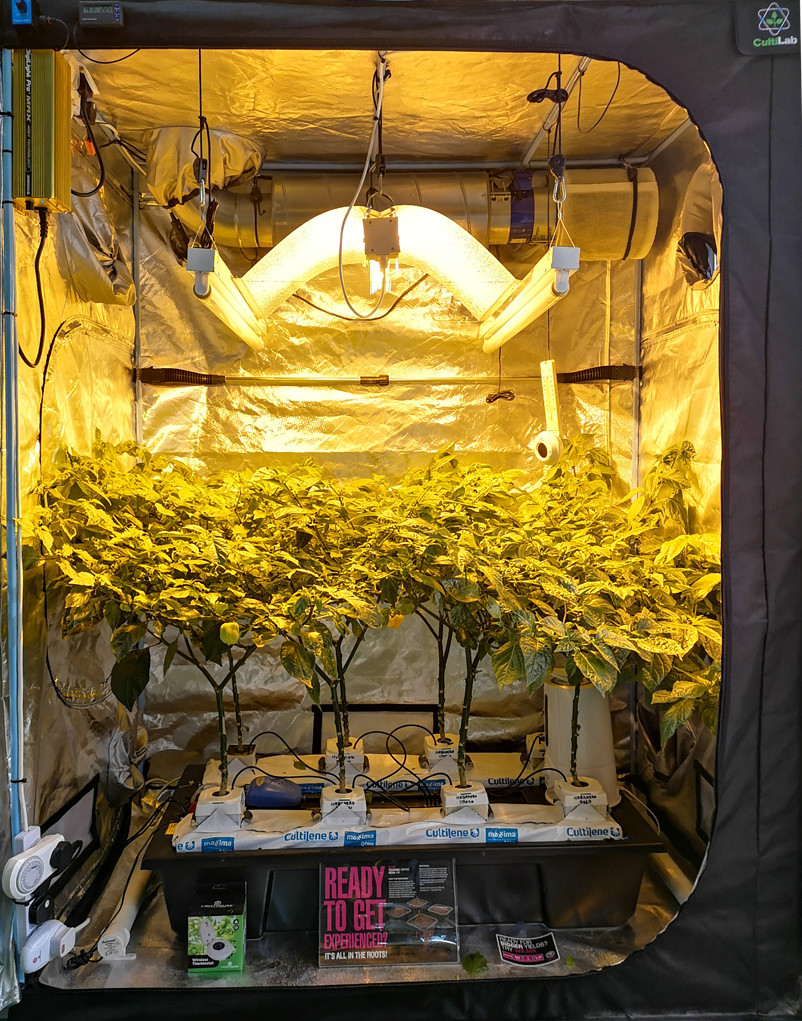
How many plants will fit in a grow tent? How many can I grow?
Well that all depends on what you are growing and the size of the pot you have it in. Correct pot size is important as you need to give your plants roots plenty of space to develop so never try and use smaller pots in an attempt to squeeze more plants in as doing so will backfire on you spectacularly in the form of poor yields.
Obviously if you are growing something like micro greens such as Chives, Mint, and Chard etc. then you will be able to fit many more plants in your tent than if you are growing a tall plant with more lateral growth or big fruits. With micro greens and other small plants (under 2ft) the growth is not tall or wide and is unlikely to encroach on any space outside of the circumference of the pot, whereas something like tomatoes or chillies will invade further into the space outside of the pot as they spread out when they hit later stages of Veg and go into Flower.
A good rule of thumb to start off with is that if you are growing anything that is more of a bushier variety of plant that spreads out laterally as it grows, then you should leave at least 2 inches around each pot once your plants are in mid to Veg and onward. Up until this point during prop and early veg when growth is slow you should be pretty much able to sit pots flush together, regardless of the plant you are growing, making use of all the available light. Obviously things may need adjusting as the plants grow and you hopefully see some monster plants developing. There is a degree of trial and error to it but generally here are some rough guidelines that may help figure out how many plants you can comfortably fit in your tent, or what size tent you want to fit your desired number of plants.
One way to look at it is by working out how many lights you need and how many lights each plant can grow. Lets use the most popular indoor lighting choice of HPS lamps as an example,
1 x 600w HPS lamp creates a light footprint that covers an area of up to 1.2m x1.2m, which co-incidentally is the most popular size of tent currently bought and a great size for a beginner to start out with. Opting for a smaller tent will make managing your environment much easier.
Each 600w lamp will grow up to 4 large plants that reach up to 4/5ft, comfortably, or 16 small plants that are in prop, early veg or that will grow no more than 2ft tall.
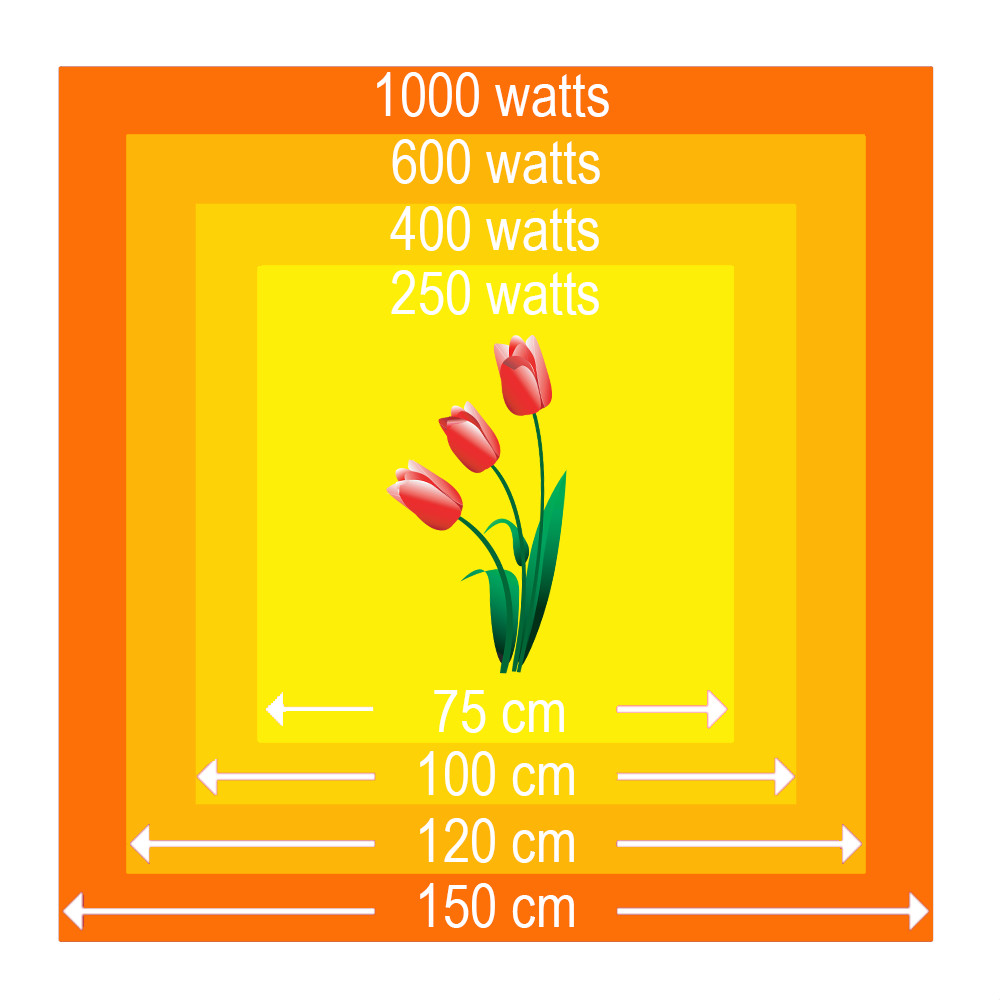
When starting out therefore, I would probably stick to the formula of 4 big plants/16 small plants per light or per 1.2m x 1.2m area. As you gain confidence and experience you will be able to tweak this to whatever suits your chosen crop best and what personally gives you best results.
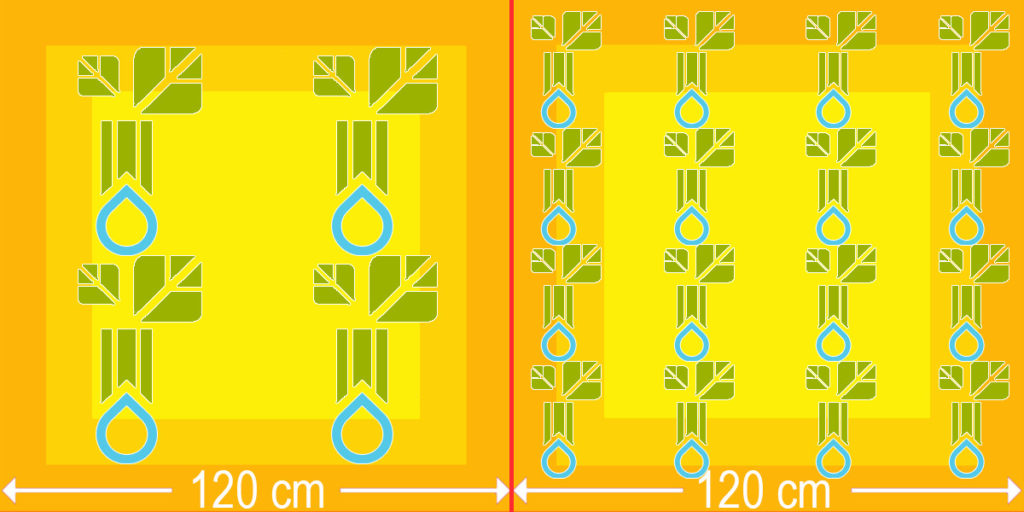
The importance of the Propagation stage
Although you can use just one tent for the full plant lifecycle, many people like to use a separate one for Propagation. Propagation is the stage at where your plant’s potential is decided. Cuttings and seedlings are very sensitive and early root development through propagation and into the beginnings of Vegetation will set the course for your success. Of course at this stage the plants are very small in size and so being in a much more compact, yet still controlled, environment gives them exactly what they need. It is therefore of paramount importance to get the environment right during the prop stage. A propagation tent is not essential and is an added expense but they can be worth it if you have the budget and extra space (they are quite small so take up minimal space, roughly 75cmx75cm to around 90x60cm) and you are serious about wanting some fantastic results from your gardening. Cultilab manufacture a excellent range of reasonably priced propagation tent kits that provide you with all the equipment you need in a specifically tailored mini-climate that is geared to nurturing your plants through this vital stage of the lifecycle.
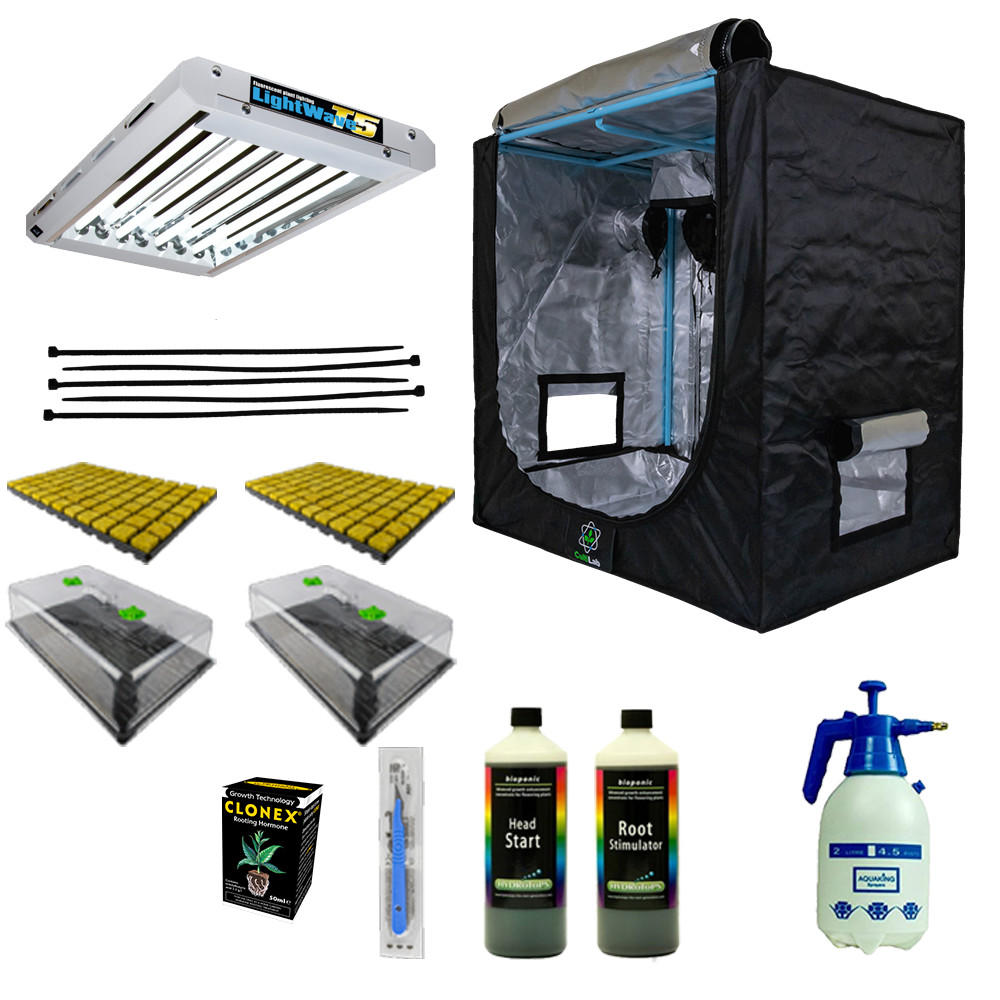
Top 10 Grow tent buying tips
So now you know that you are feeling more informed and you know what you are growing and what size you of tent you need, here is a final bit of advice on what you should be looking out for when buying your tent in order to get a good quality product that will perform and last you for many cycles to come.
Quality seams and stitching.
One of the most important qualities of a good grow tent is that they should be “semi sealed” environments that do not let heat, light or pests in or out without the growers say so. The way the tent is manufactured is vital to this, so check that seams and stitching are tight and strong with no weak points. It is also important to check that there are no needle holes from where the tent has been stitched together, that will then affect light and heat seeping in or out. This happens as sometimes the needle used to stitch the tent together can be thicker than the thread used, leaving holes behind.
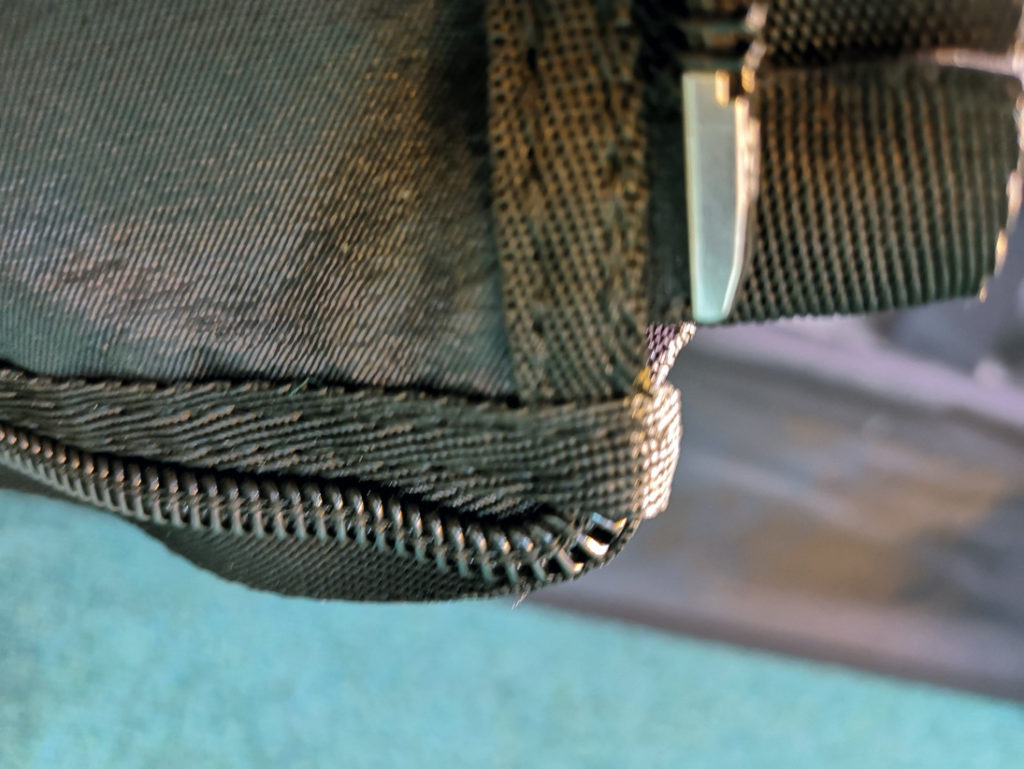
Quality Zips.
For similar reasons as above you should check that the zips are strong and well fixed. If a zip breaks your tent will be useless as it will no longer be a light tight, sealed climate. Even if it is a small seemingly unimportant zip that bursts or just comes away from the tent fabric, this can still be detrimental. It can make the overall fit of the tent loose, which can affect the atmosphere and pressure inside the tent when the ventilation is on, as well as cause the fabric to shift about, causing stress points and damage in other areas as time goes on.
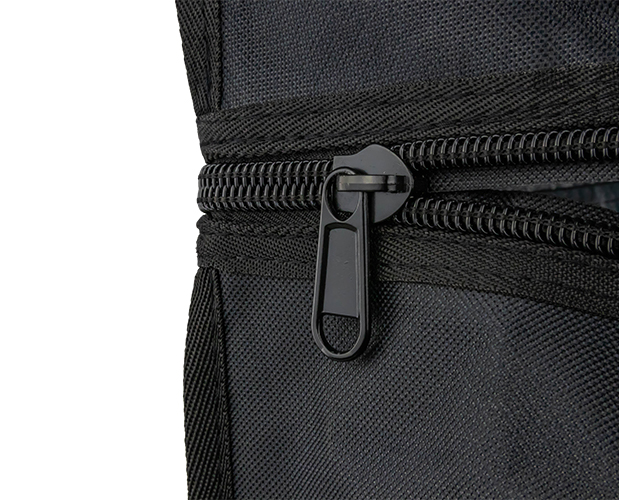
Strong frame.
Although your plants, your medium, water and indeed your own weight will still be exerted on the floor, remember that your tents frame will have to bear the weight of your lights and extraction equipment as well as being exposed to some high temperatures for extended periods of time, so you don’t want anything that could buckle under the pressure. Check that poles are made from a strong metal with no obvious damage or weaknesses.
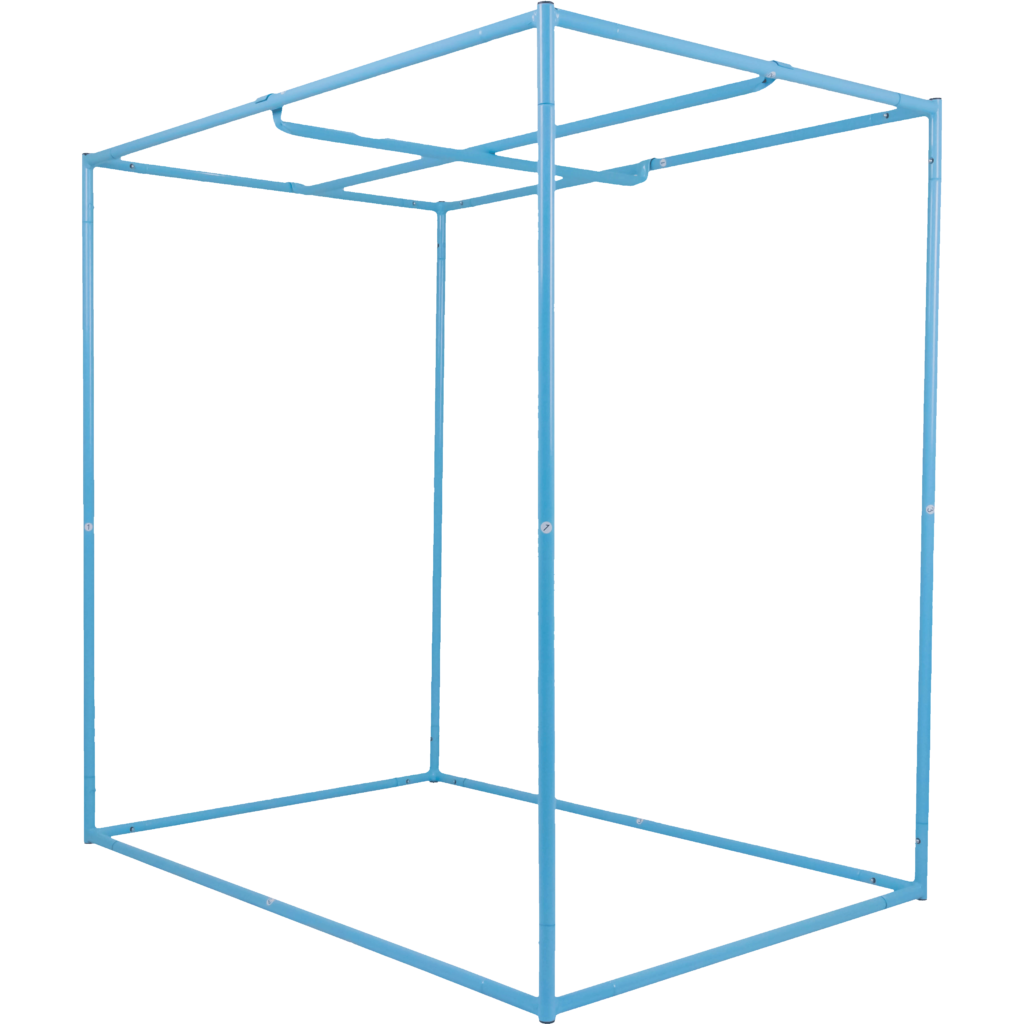
Secure Corner brackets
Following on from above, the corner brackets hold your whole frame together and so again need to be well made, strong and hold the poles together securely with minimal movement in the frame when assembled. Cultilab uses fully welded metal corner pieces on all their tents while other budget brands use plastic corners.
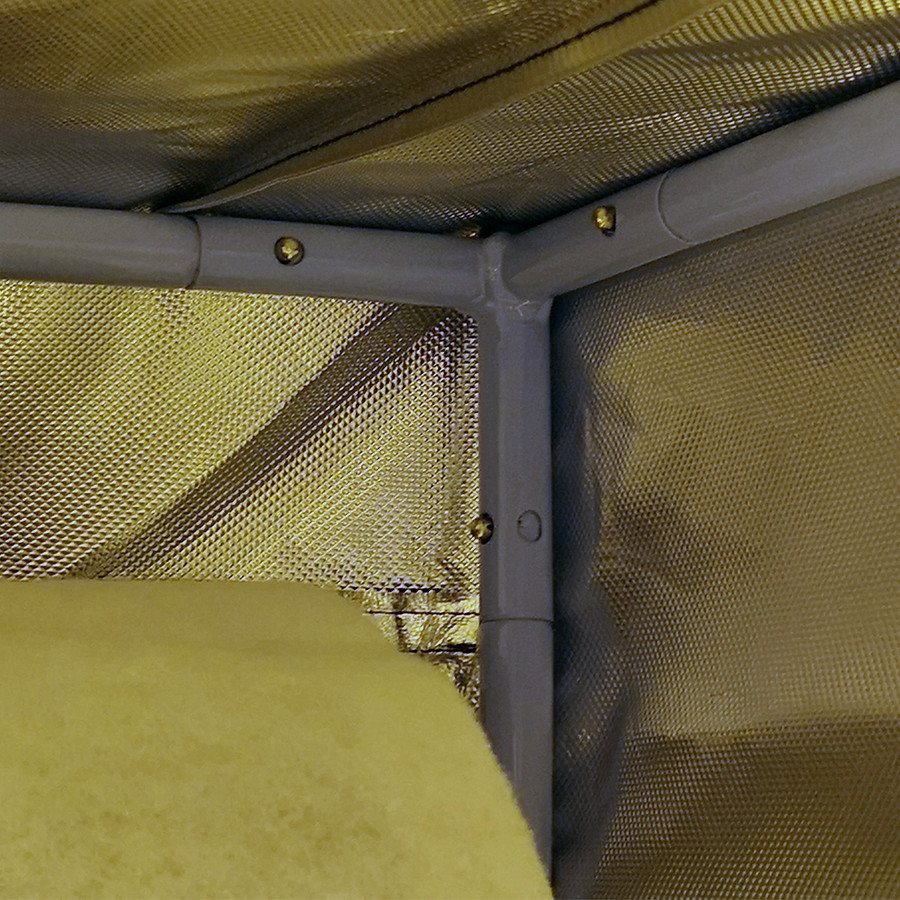
Suitable Fabric Cover
The tent cover should be a strong canvas like fabric, usually made of nylon, polyester, Mylar or a composite of materials. A durable fabric will not only maintain your lightproof, heat retaining, watertight atmosphere but stop pests getting in and reduce any noise along with stopping any odours from escaping. Over all a quality fabric will make your tent more hardwearing, long lasting and resistant to tears and rips. The rule of thumb here is the heavier and thicker the better. Check out the image of this Budbox canvas under a microscope – It’s a thick heavy material with a heavy weave.
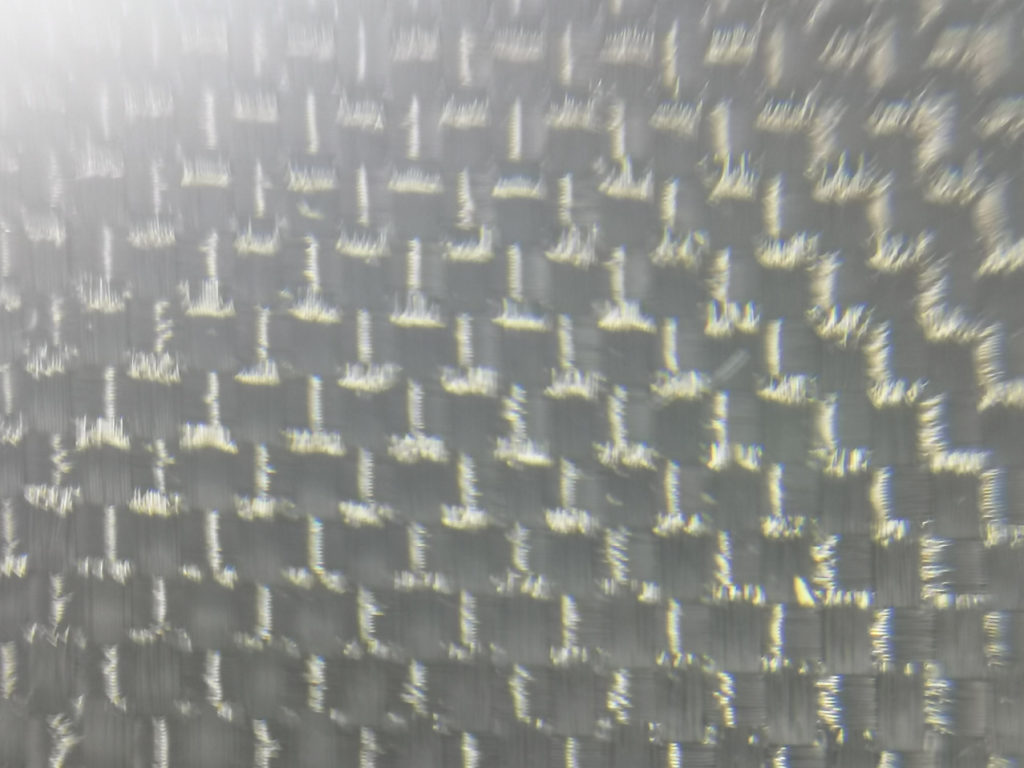
Waterproof
Depending on what growing system you use, there could be a huge amount of water in your tent at any one time, which could cause disaster if there was any kind of leak or spillage, not only within your Grow tent but in the wider area outside. So always check that the base of the tent is watertight.
Reflective interior
This should cover the entirety of the tents inner surface including walls, floor and ceiling. Full coverage is important as every 1% of light lost translates as a 1% loss in yield! The reflective lining can be either white or silver. Both work well but silver tents can be up to 1-2C warmer than white as they retain more heat, which can be great if you have plants that love high temperatures but can make controlling temperatures harder if your plants like it a little cooler. With Silver lined tents, there are two patterns commonly available, Lychee and Diamond:
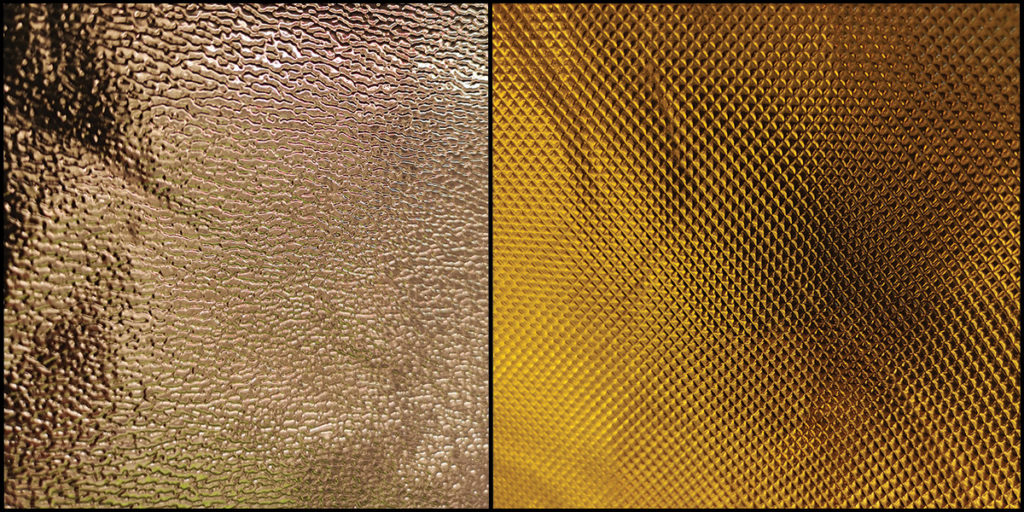
Ports and Vents
A good tent should have plenty of ports and vents on it, this will give you plenty of safe and convenient options for positioning all of your equipment and electrical cables securely. Ports and vents should also have efficient means of opening and closing that keep the tents sealed environment intact at all times.
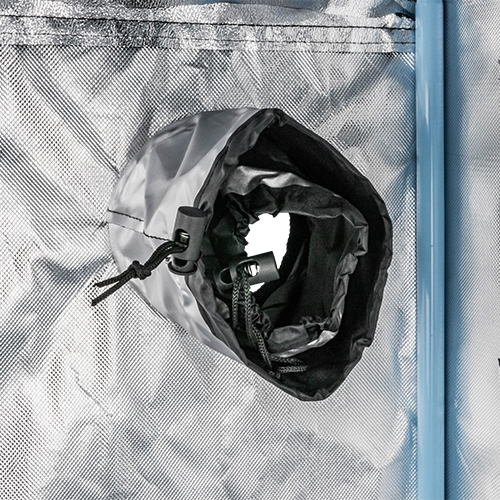
Storage
Quality tents will come with a protective bag in which you can keep all of your components stored easily when it is not in use. Always use your storage bag if you have one, as it will keep your tent in good condition, safe from water or mold damage, dust or pests.
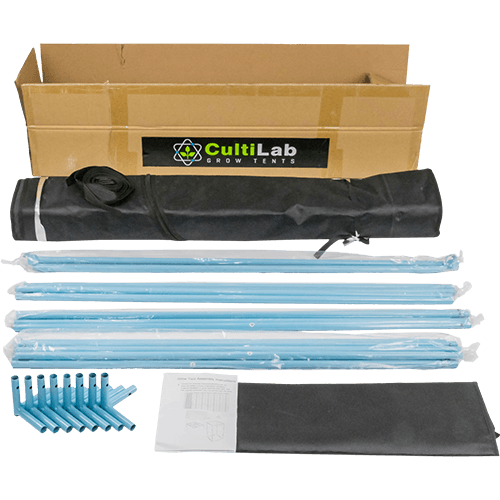
Compatibility
Your tent size will have a direct bearing on the rest of equipment you need such as the amount of lights and power of extraction kit, so bear this in mind when purchasing and make sure that everything is compatible. This is another example of why, when first starting out, that a complete tent kit might be the best option. This way you can rest assured that all your equipment is perfect for the size of your environment.
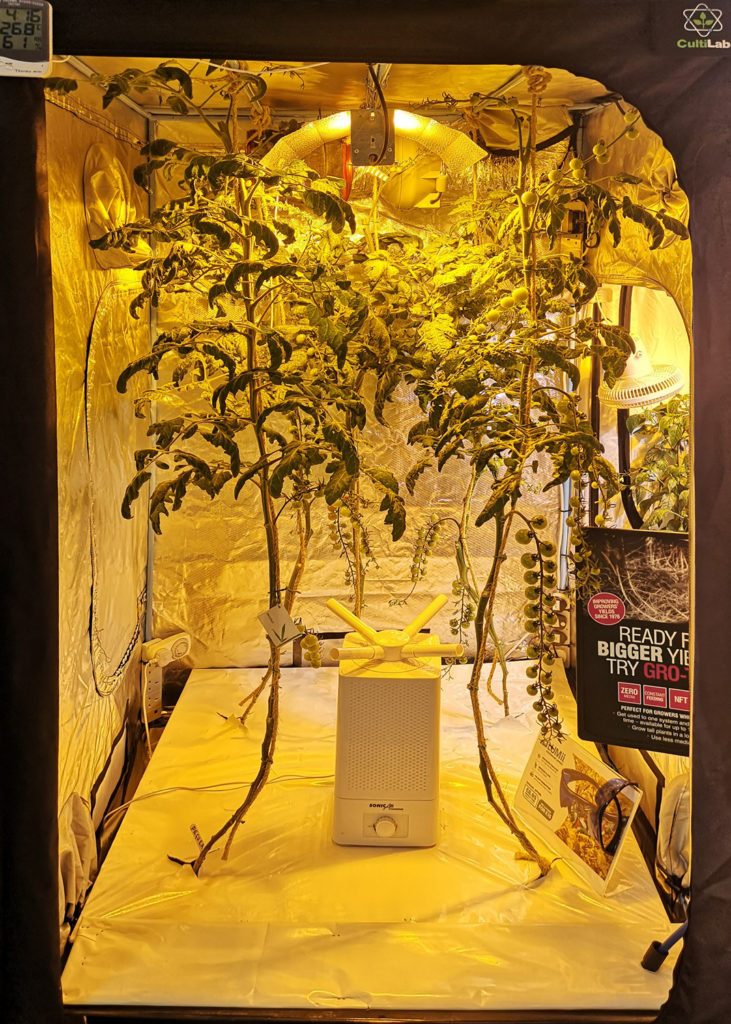
There you have it a complete guide to buying your first Grow Tent.




